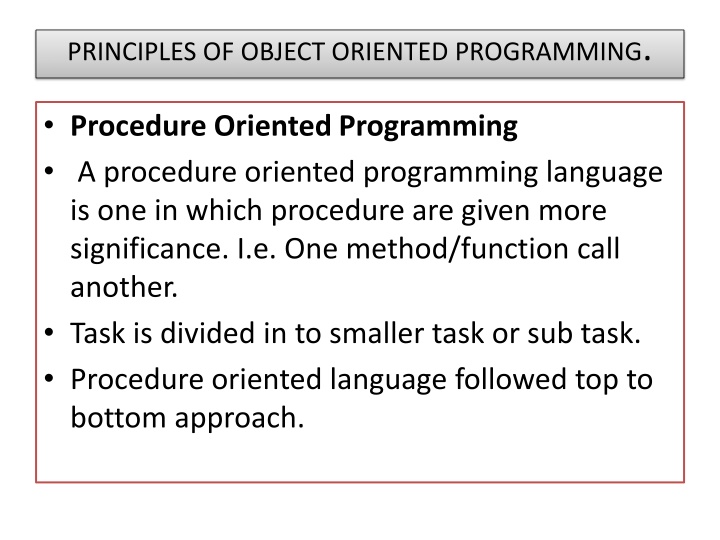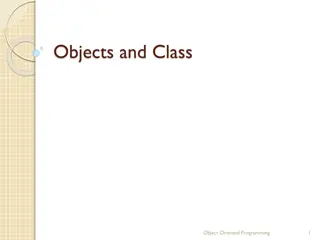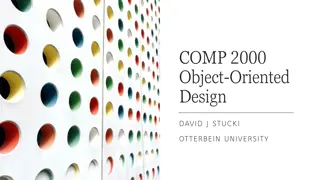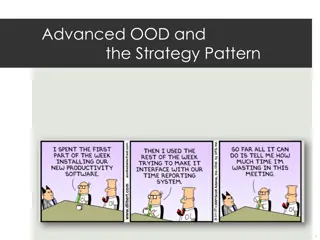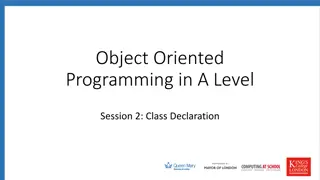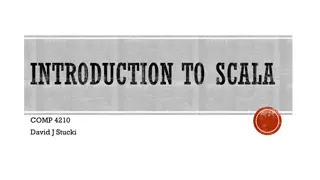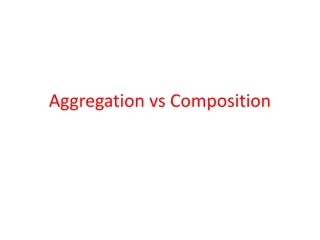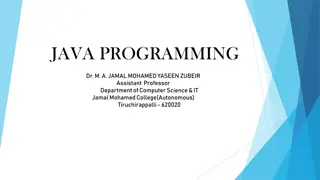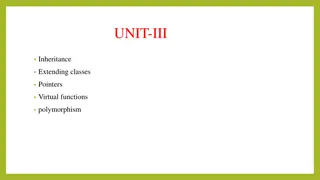Principles of Object Oriented Programming: Procedure Oriented Language Significance
Object-oriented programming emphasizes the use of objects and classes to structure code, while procedure-oriented programming focuses on procedures. In a procedure-oriented programming language, procedures hold more importance. Understanding the differences between these programming paradigms is crucial for effective software development.
Download Presentation

Please find below an Image/Link to download the presentation.
The content on the website is provided AS IS for your information and personal use only. It may not be sold, licensed, or shared on other websites without obtaining consent from the author.If you encounter any issues during the download, it is possible that the publisher has removed the file from their server.
You are allowed to download the files provided on this website for personal or commercial use, subject to the condition that they are used lawfully. All files are the property of their respective owners.
The content on the website is provided AS IS for your information and personal use only. It may not be sold, licensed, or shared on other websites without obtaining consent from the author.
E N D
Presentation Transcript
PRINCIPLES OF OBJECT ORIENTED PROGRAMMING. Procedure Oriented Programming A procedure oriented programming language is one in which procedure are given more significance. I.e. One method/function call another. Task is divided in to smaller task or sub task. Procedure oriented language followed top to bottom approach.
Disadvantage:- Difficult to trace which function are using data. Error correction is to difficult Example c programming
Basics of Object oriented programming:- Object oriented programming is related to object which has data and function built around it. Data can be accessed with function The function of one object can access the data of another object through the function of that object. It uses bottom up approach In object oriented programming smaller problem are first solve and then huge problem can be solved. Example C++,Java, Ruby, C# Python are example.
Important terminology related to Object Oriented Programming CLASS:- It is category of things. Similar to structure but only additional data member with function. Object:- It is an instance of class. It is similar to variable.
Important terminology related to Object Oriented Programming Data abstraction: Abstraction is required parameter for object. Ex.if there is class as circle we need to just define the radius of object of this class. Data Encapsulation: The data of an object is hidden from other object using encapsulation. Encapsulation is achieved by putting data & function associated with it in to class. Inheritance:- The mechanism of deriving of the properties of one class in to another class known as inheritance Polymorphism:- Poly means multiple and morph means different form.i.e. multiple forms of the same thing.
Application of Object oriented programming Real time system Simulation and modeling Object-oriented database. HTML & Hypermedia. AI & NN. CAD/CAM system.
C C++ C programming is structure programming It is procedure oriented programming Reliable simple easy to use. C++ is superset of c with additional of class. C++ object oriented programming. C++ bottom up approach
Simple C++ programming:- #include<iostream> int main() { cout<<"Hello World!"; return 0; } Output:Hello World!
Benefits Of OOP We can eliminate redundant code. We can built program from standard working modules that communicate with one another. The principal of data hiding help to provide secure program. The data center design approach enables us to captures more details of module. OOP system can be easily upgraded from small to large system.
Assignments -1 List any Four feature of POP Describe any 4 basics concept of oop List 4 OOP language Differentiate between POP & OOP Explain token in c & C++ Write & explain structure of C++ State & explain Scope & memory management operator in detail. Describe syntax of Cin & Cout. Write simple program to demonstrate of C++ structure.
